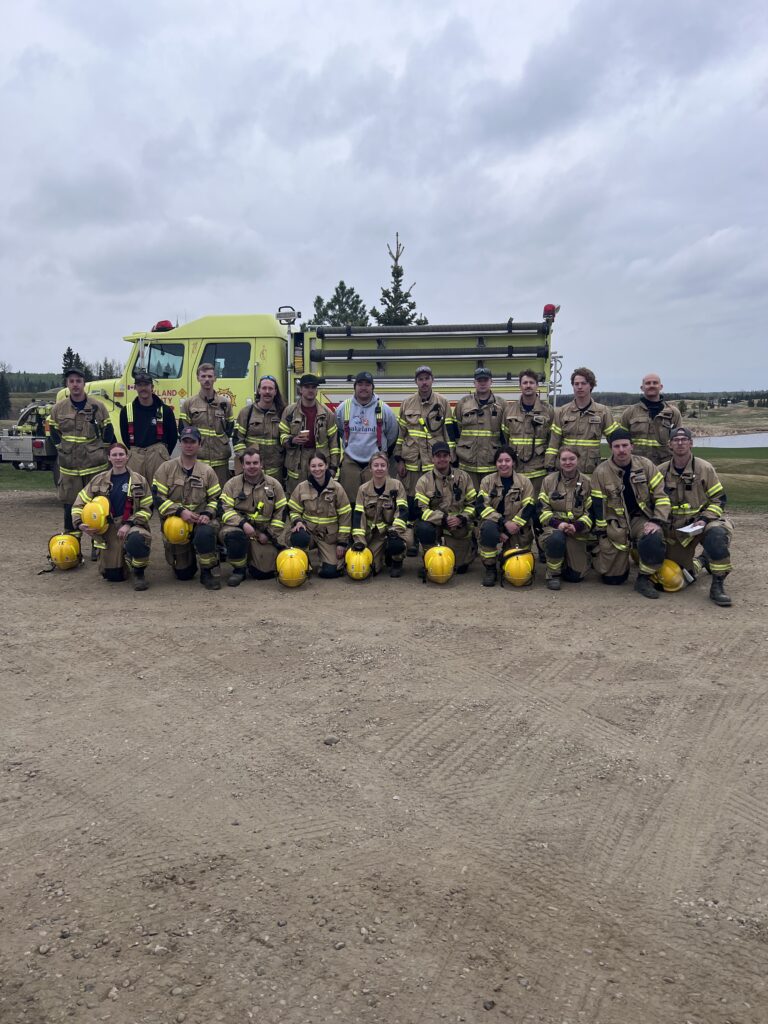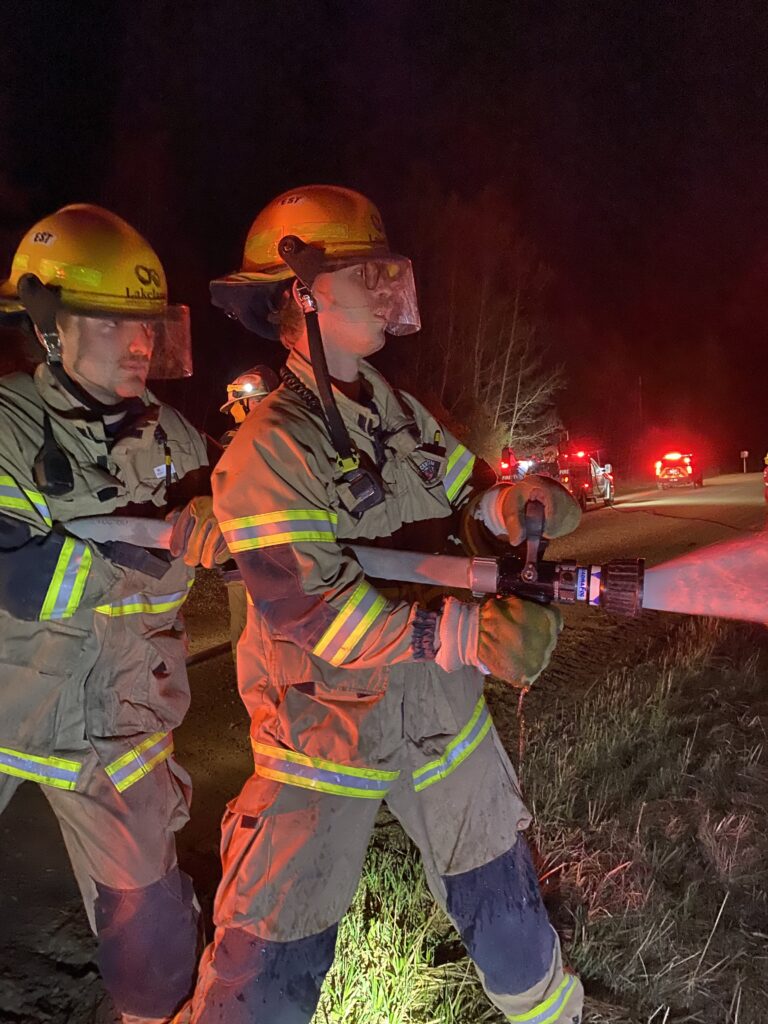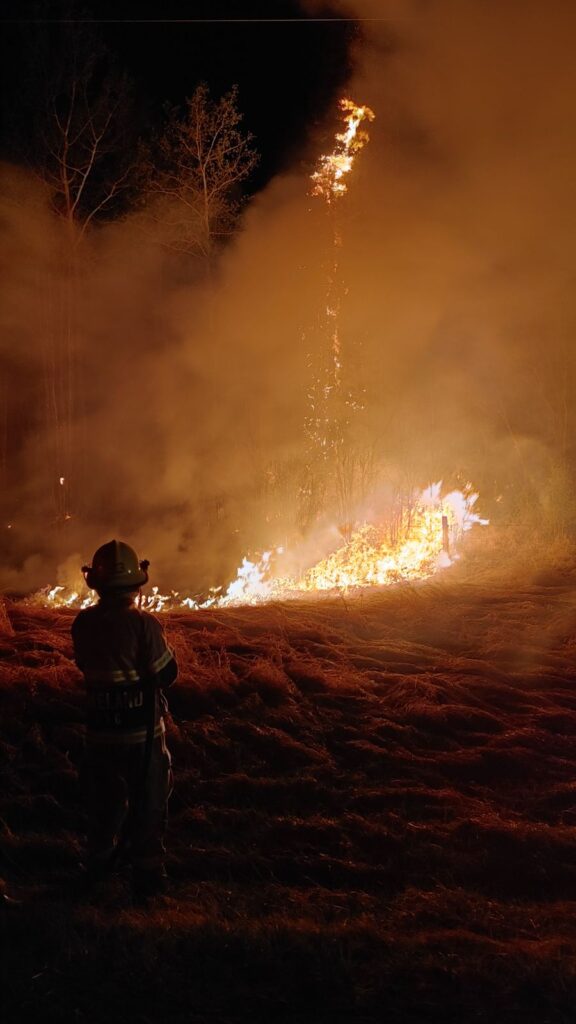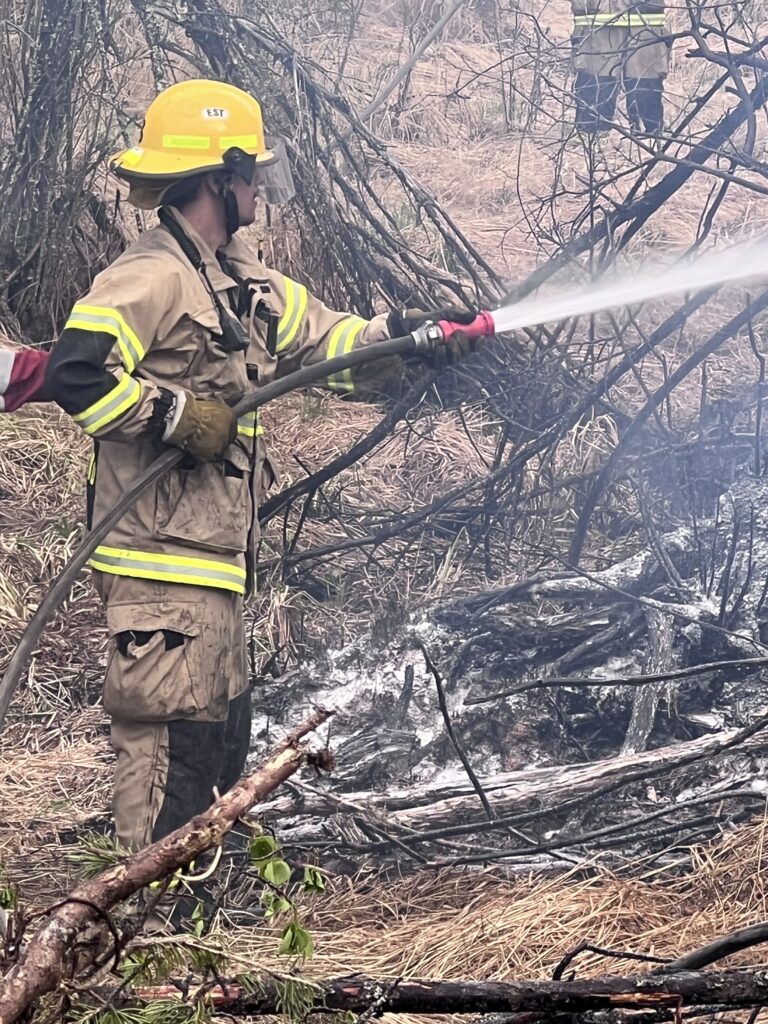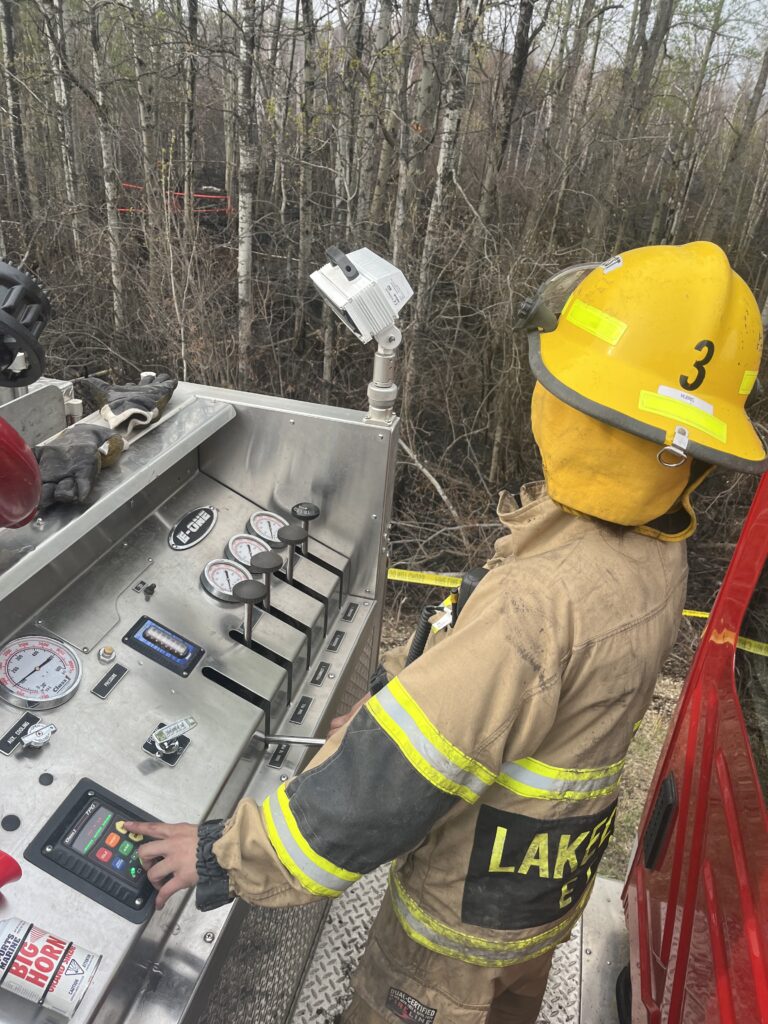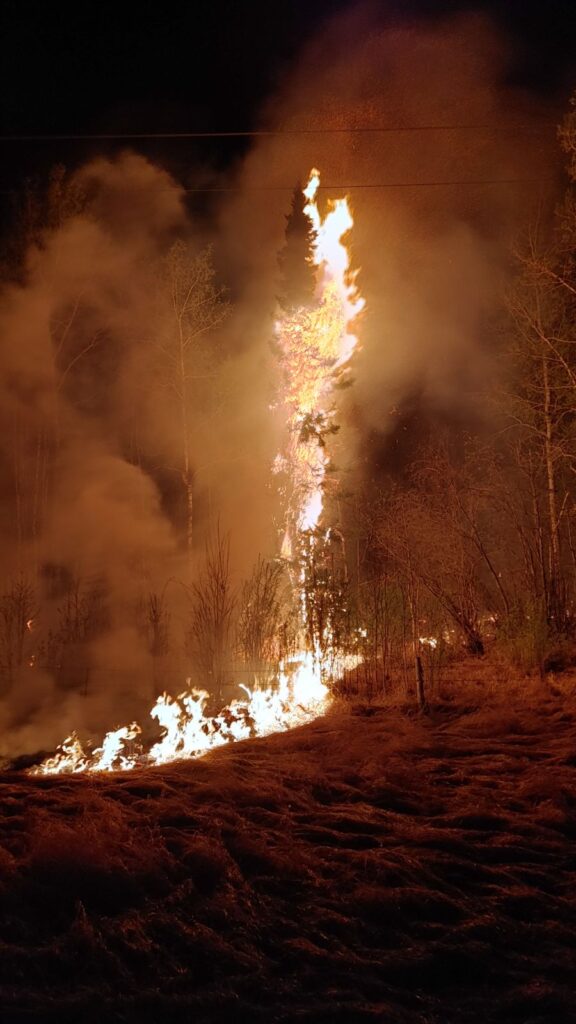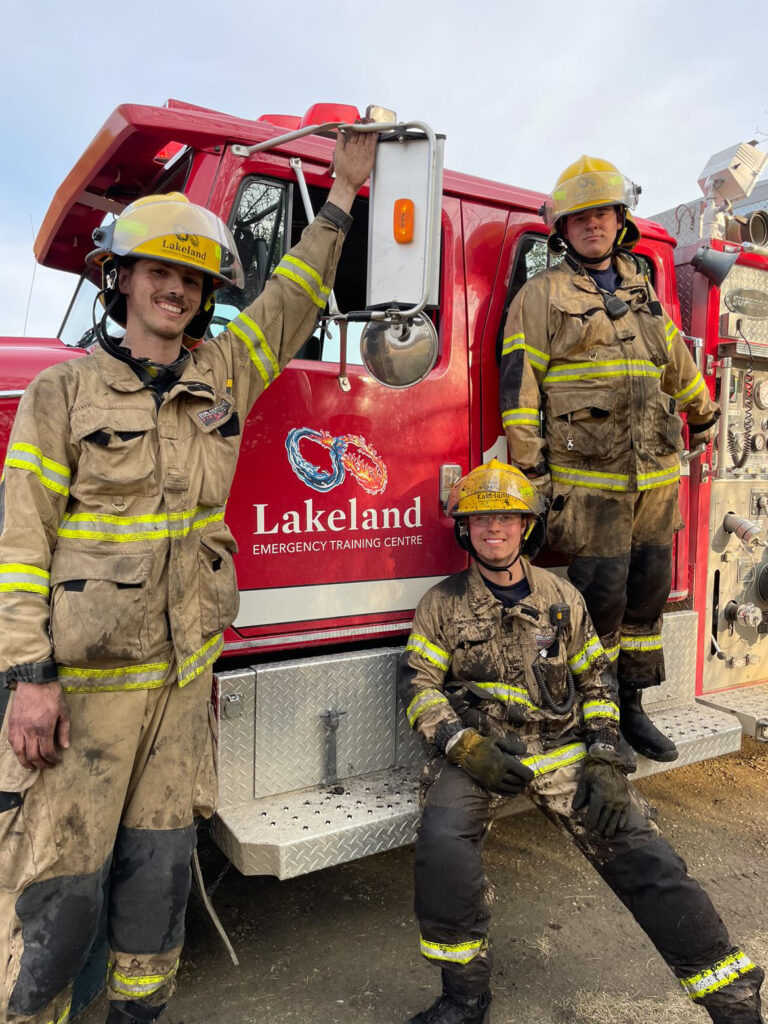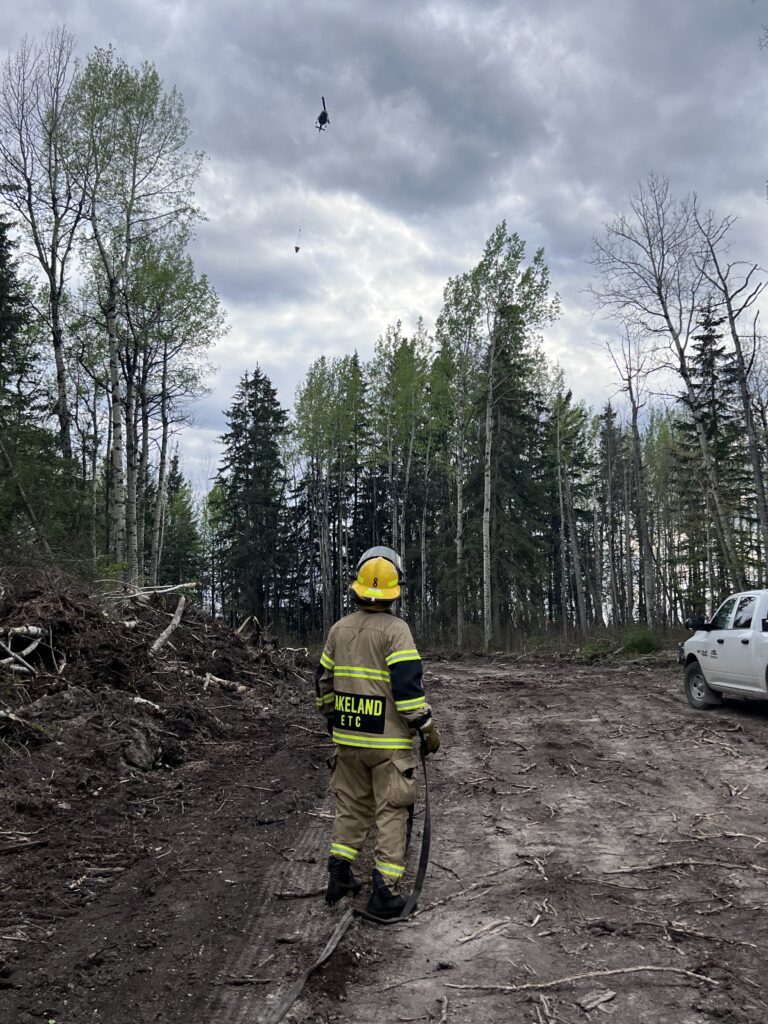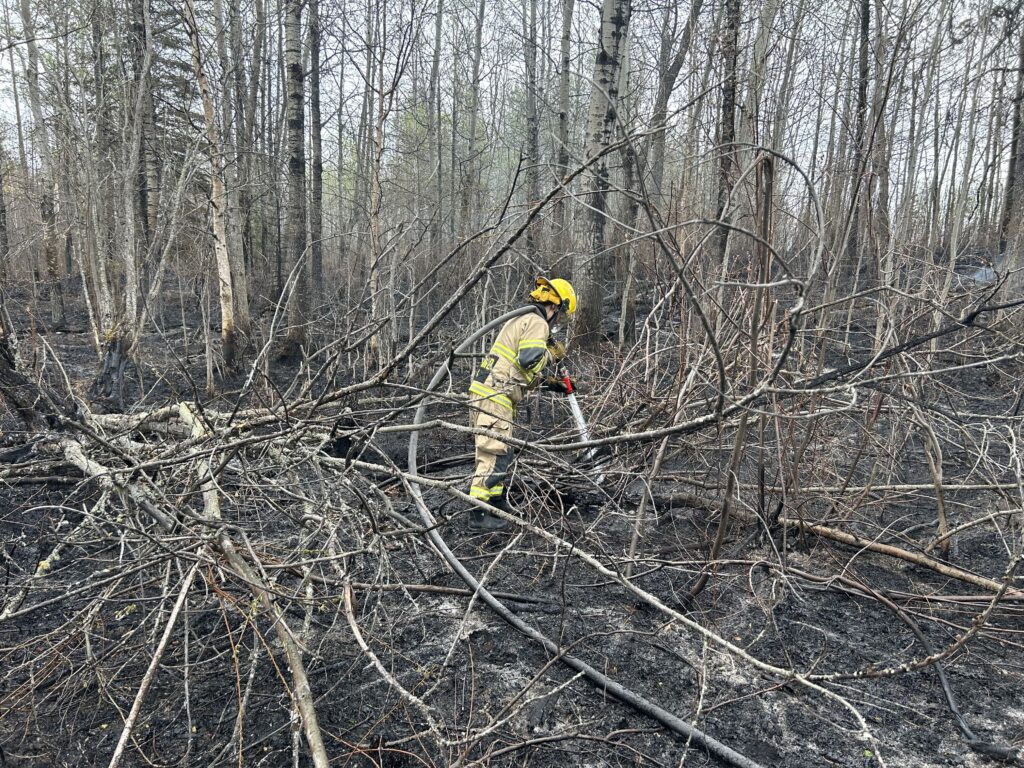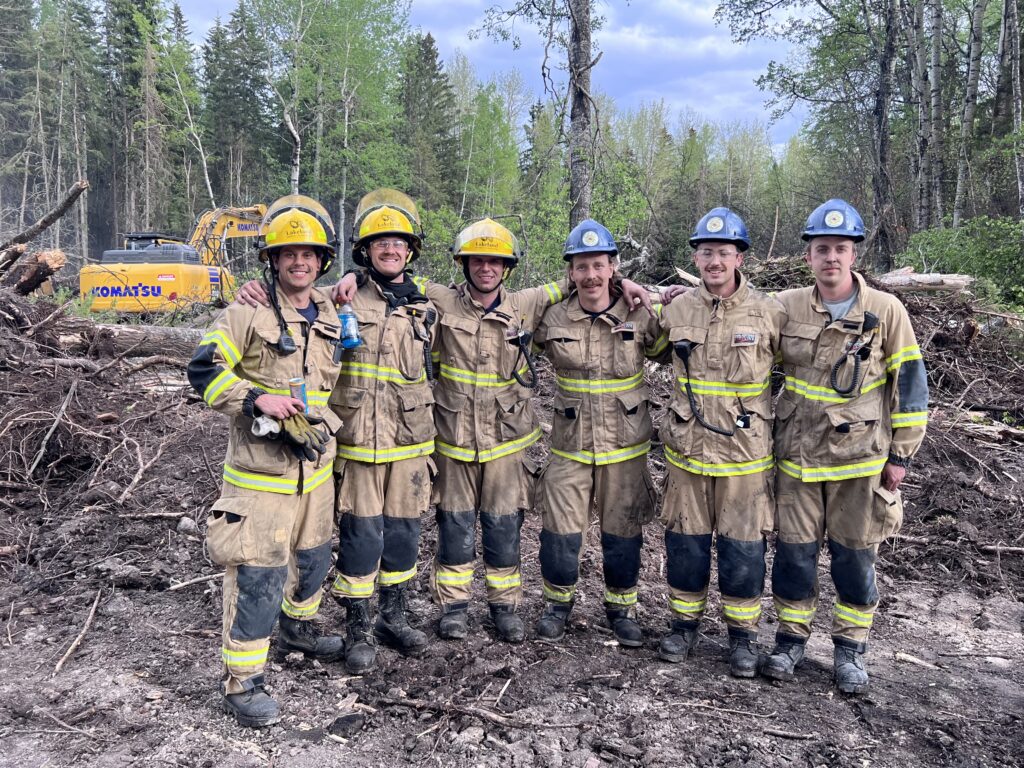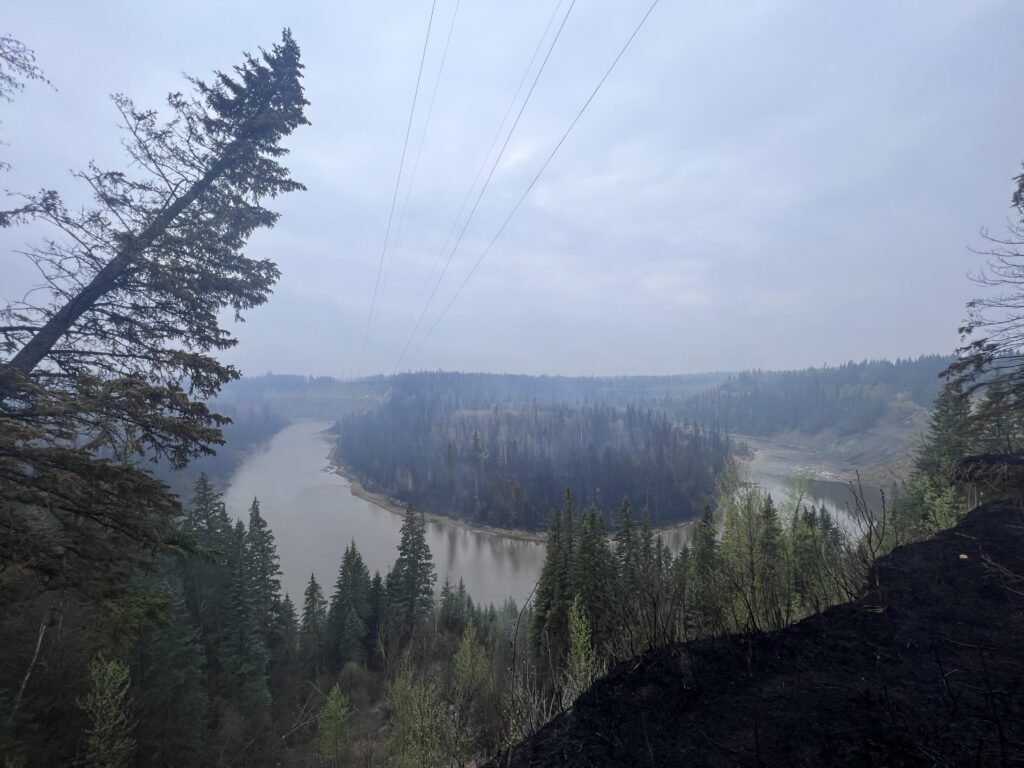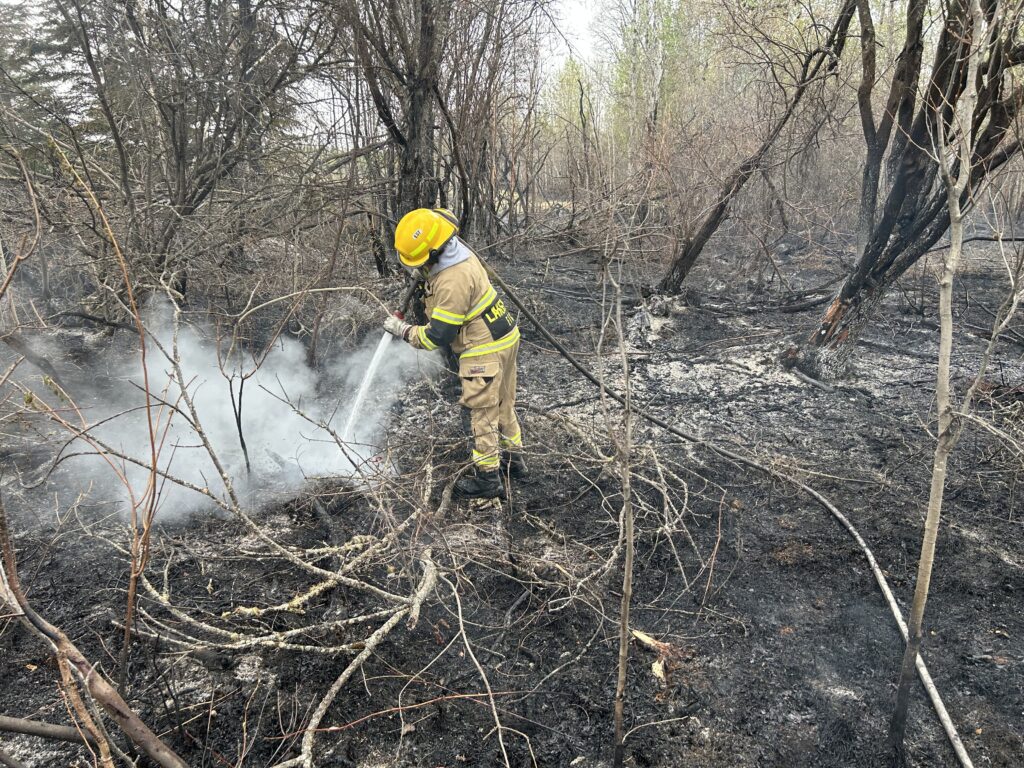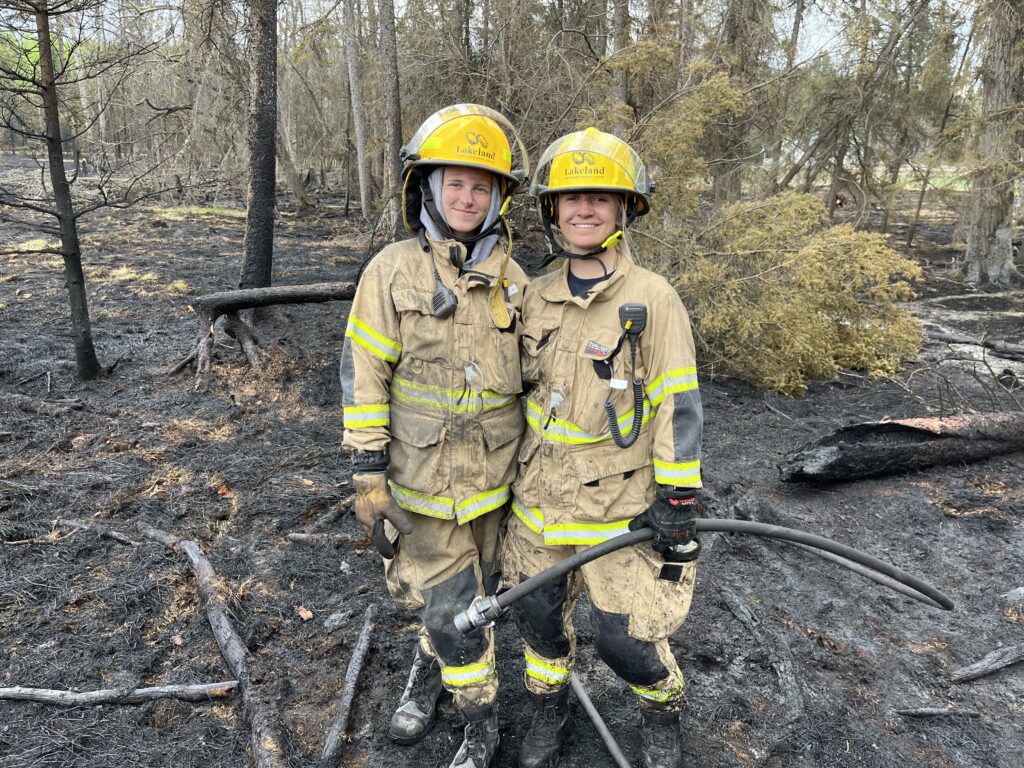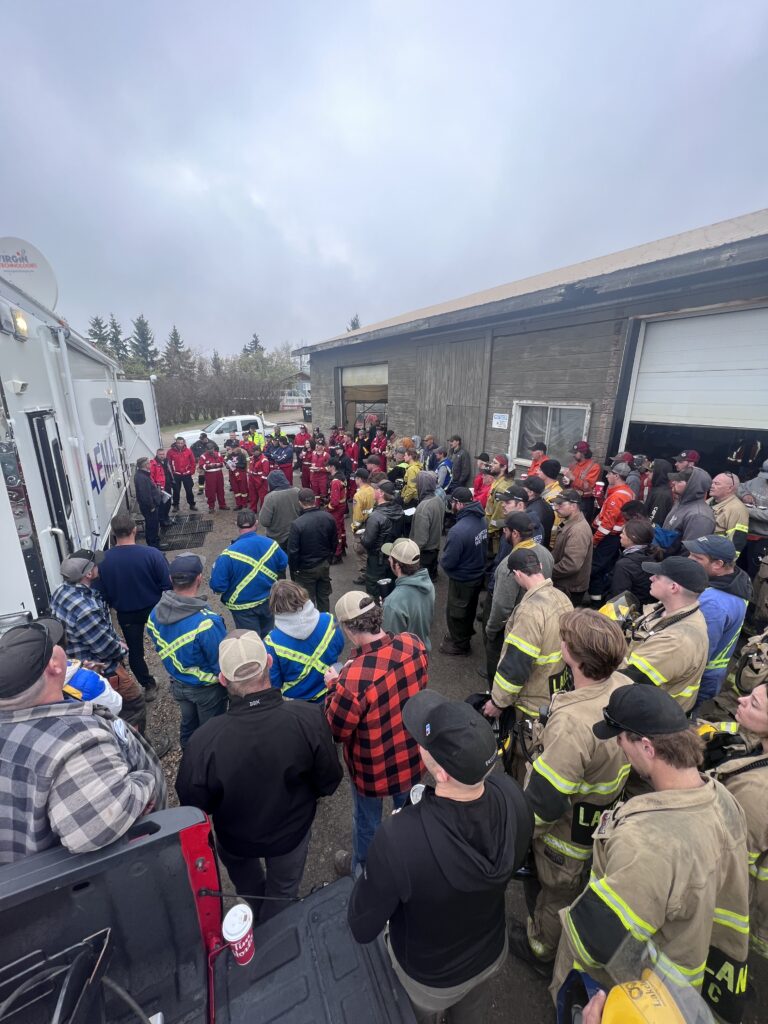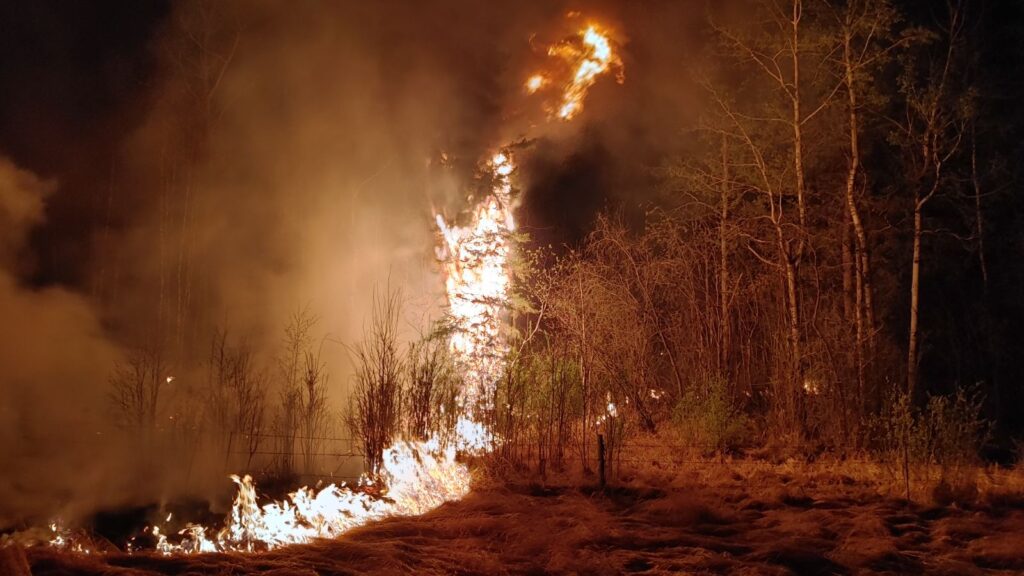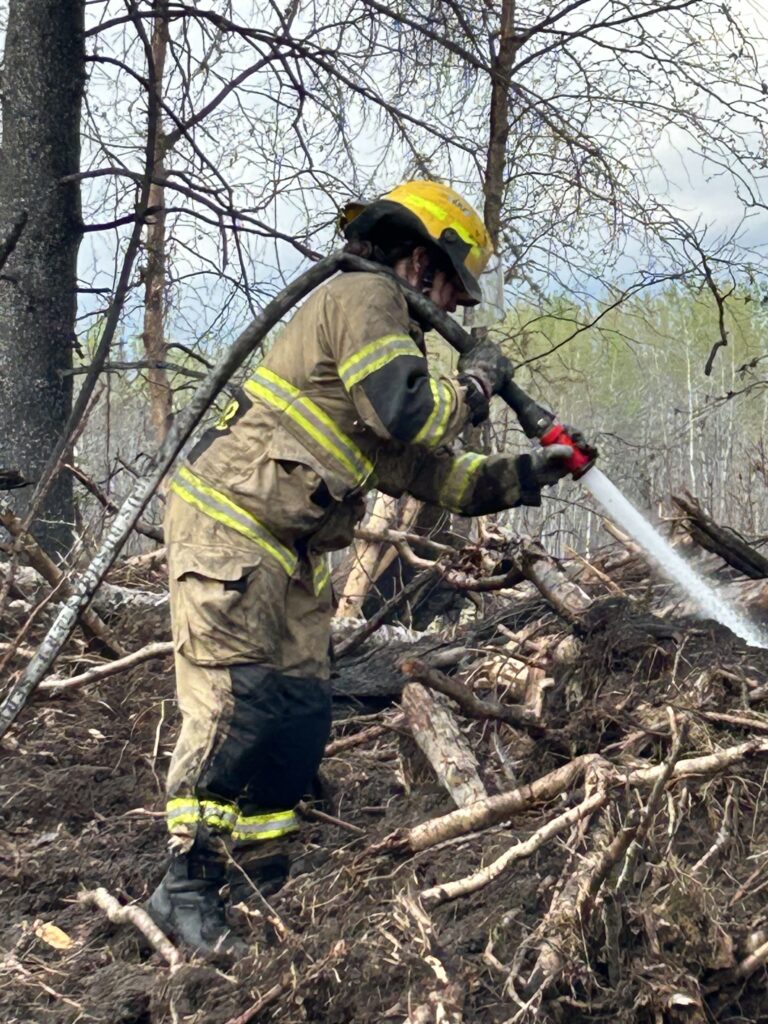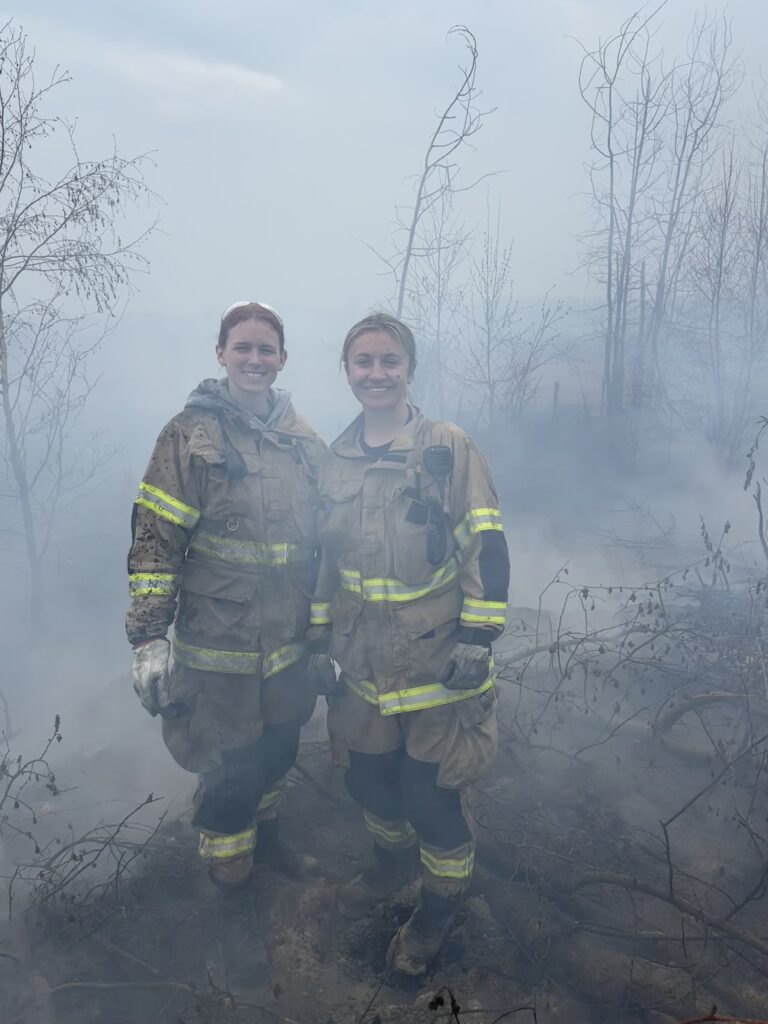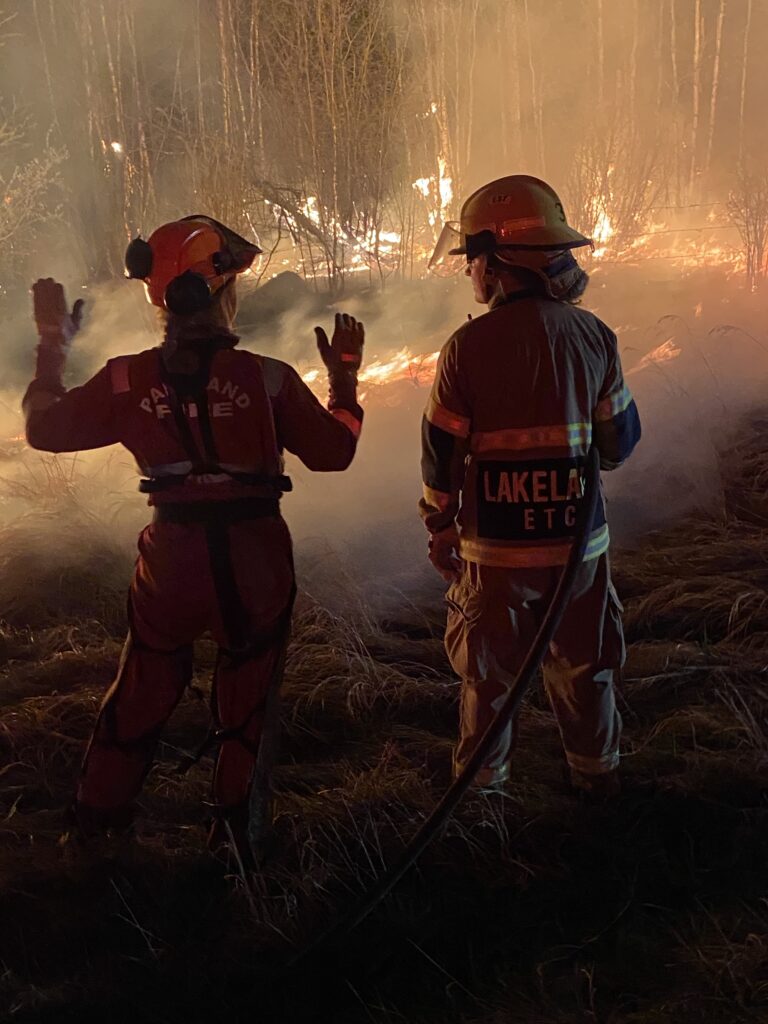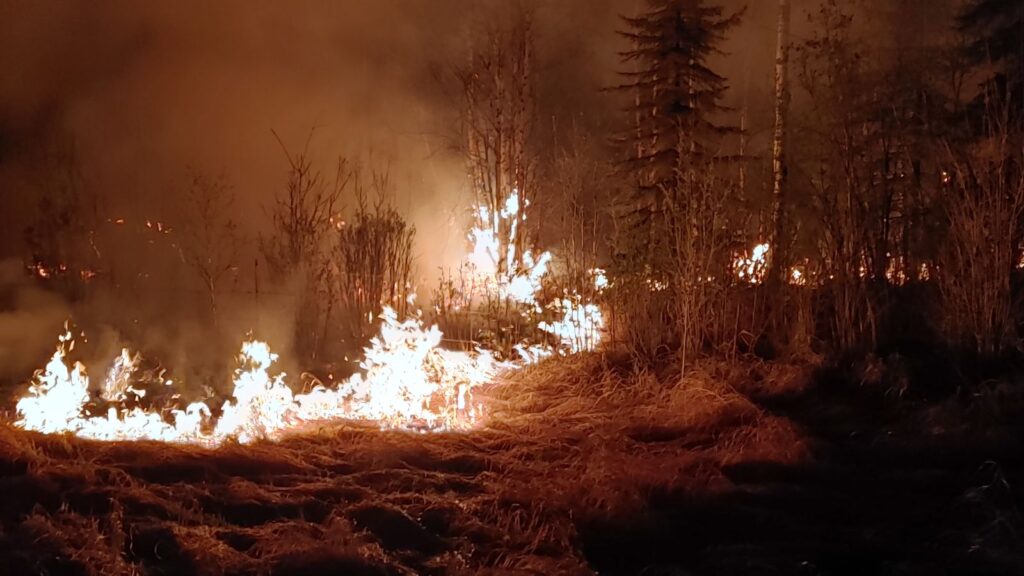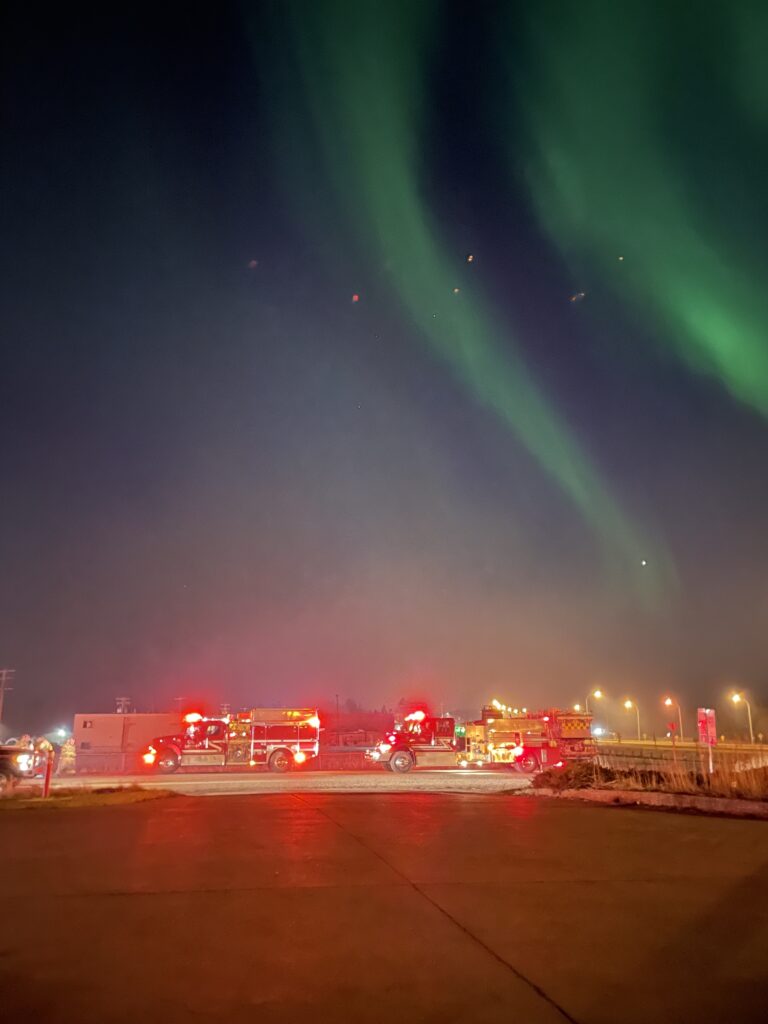
Features
Training
Wildfire Week
Learning to fight wildfires on the front line
July 12, 2023
By
Elena De Luigi
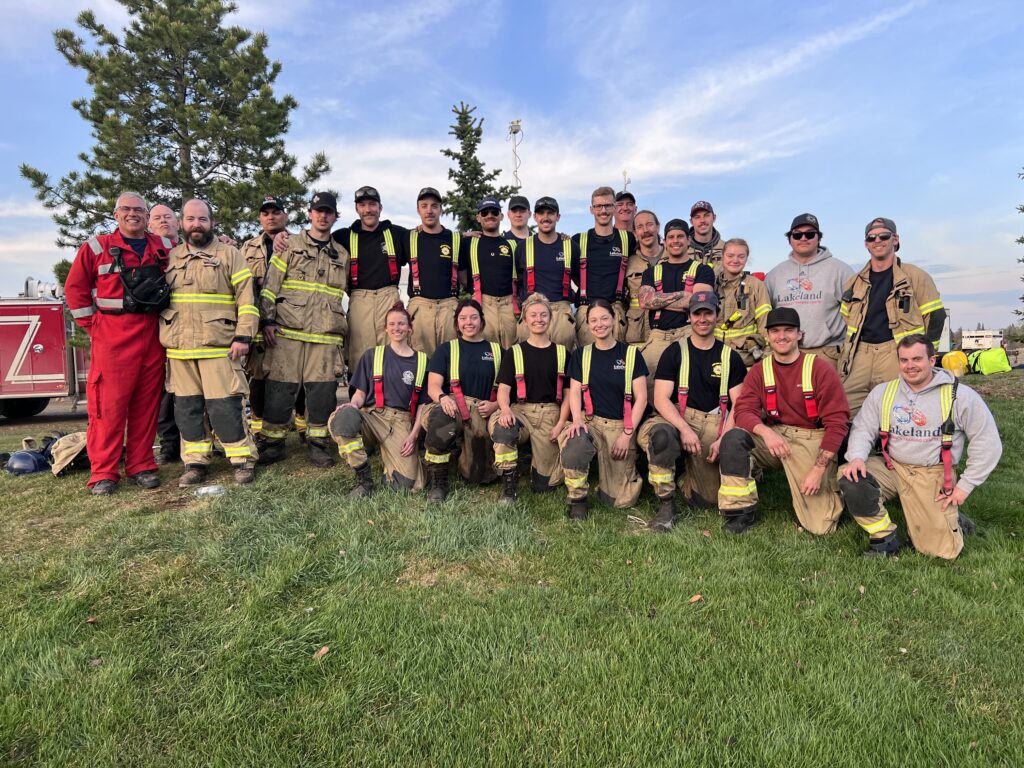 Photo credit: Lakeland College Emergency Training Centre
Photo credit: Lakeland College Emergency Training Centre When a group of fire fighting students at Lakeland College’s Emergency Training Centre (ETC) heard they were being asked to deploy to Parkland County, Alta., to help fight a recently ignited wildfire, they were ecstatic. Getting to learn how to be a firefighter in a real-life scenario outside the classroom was a dream come true.
Even Shawn McKerry, the dean at the training centre and a previous deputy fire chief, was surprised when the urgent request came through. He had sent a previous message offering support to the Parkland fire chief when the fire broke out, but he never imagined he would get that kind of reply.
While McKerry and a few other instructors were discussing the possibilities of going to Parkland, they knew had to keep it a secret from the students. “We kept it on the down low until the students’ exam was complete, and surprised the group by asking them if they wanted to go fight a fire. Pretty much everybody jumped out of their seat and said, ‘Yeah, let’s go.’”
Serena Schlamp, one of the students who went to Parkland, said that she and another female fire fighting student were following the news of the wildfire’s progression and wondering if they could go and help out.
“We were so amazed that our administrators and our instructors had this much faith in us to send us all out there. They trusted that we are responsible and competent to go and make a difference out there,” she said. “That really meant a lot. We weren’t technically qualified workers, but we were still helping out, which was awesome.”
Once the college had approved the trip and the logistics were nailed down, all that was left to do was pack a bag and get on a truck. In total, 21 students and six instructors drove two and a half hours from the college campus in Vermilion, Alta., to Parkland County and spent five days there.
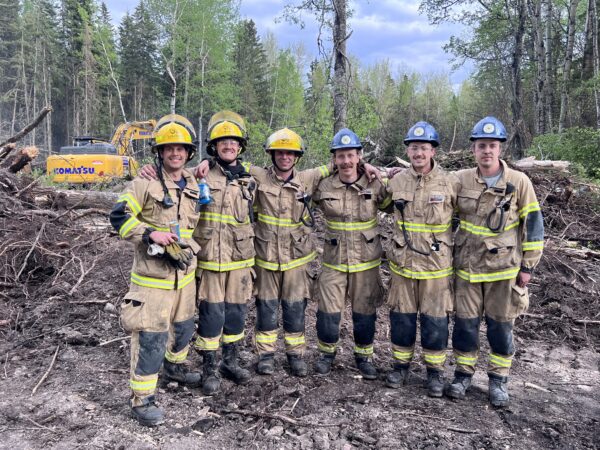
Photo credit: Lakeland College Emergency Training Centre
When the students and instructors arrived, they immediately got to work. They were assigned to work on the north flank of the fire, which aided in halting the spreading fire from entering the Village of Entwistle, Alta. The students were tasked with performing various roles with different teams, which included being a crew member on wildland fire apparatus and tanker/tender units supporting water supply. They also conducted many hotspot and mop-up activities, fire watching and structural protection patrols in the Entwistle community.
Additionally, the students were able to partake in a backburn operation, helicopter pre-flight and safety briefings, and morning operations briefings. They were invited to experience setting up and operating structural protection systems on homes, working around heavy equipment, supporting the protection of fire breaks and cat guards, working around helicopters and seeing the incident command system in action.
In terms of training prior to going to Parkland, McKerry said the students arrived on campus back in February, working toward a wide variety of fire fighting and medical credentials. At the point of deployment, they had been trained to NFPA 1001 Level 1 Firefighter. “Before deploying, we also ran students though a short wildland firefighter orientation and safety session,” he said.
The NFPA 1001 Level 1 Firefighter course is the minimum amount of training a person needs to become a firefighter who primarily works with structural fires, states the Ontario Fire Academy website.
One of the biggest lessons Schlamp learned was that everyone had a role to play, and all those roles were equally as important.
At Lakeland’s ETC, the firefighting students learn hands-on skills in dangerous goods response, vehicle extrication and wildland fires beyond fighting structure fires. Additional courses for mental health resilience and resume writing are also offered. Specifically in terms of battling wildfires, McKerry said that in an ideal world – for the most versatility – firefighters would be qualified in structural firefighting, wildland firefighting and trained in wildland urban interface. However, it depends on which tasks people are assigned to do in response to those types of major incidents.
“Knowing that our students are trained to NFPA 1001 Level 1 Firefighter, Parkland and I understood that they were going to do moderate to lower risk work which, in turn, freed up higher trained professionals to deploy to high priority areas,” he said.
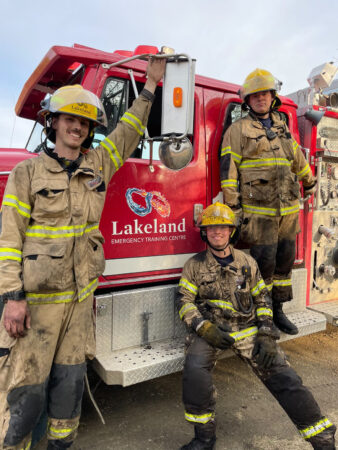
Photo credit: Lakeland College Emergency Training Centre
Michael Pintucci, another Lakeland fire fighting student who went to Parkland, said he initially was worried he would react differently in the field than he did at school, because the training centre provides a safety net in a controlled environment and the real world does not. “It was comforting to know that there was this calm sense of understanding, and it was right away. Even the little training we had at that point in time, it just clicked,” he said.
Some of the firefighting tactics Parkland was using, including helicopters and skimmer water bomber units, would not be possible in a classroom setting. McKerry said those are too expensive for the college to procure for the students to learn on. That is also partially why the goal is to do more of these real-life training days on the front line and solidify them as part of the curriculum in the future.
“I felt like I’d never learned so much in five days in my life. Those shifts just flew by—they felt like they were two hours even if they were 12,” Schlamp said. “It was a great experience to start out our venture into the workforce. It really painted the industry for what it is, and it was great.”
One of the biggest lessons Schlamp learned was that everyone had a role to play, and all those roles were equally as important. Not going to Parkland to help the crews and the community was not even an option in her mind. “When you get a call to go help someone, something inside of you will always say ‘You have to go.’ You’re always going to want to go help, and that’s going to be the number one thing driving you,” she said.
For Pintucci, going to Parkland was both exhilarating and humbling at the same time. He said returning at the end of each day and debriefing with fellow students and instructors was helpful to his understanding of how to be a firefighter. “It really gave us perspective as to what we’ll be doing as future firefighters and community members,” he said. “I remember coming back on the second or third day. We experienced a bit of a fire, and we helped put it out. Afterwards, I rushed over to my instructors like a kid in a candy shop saying, ‘There was a fire!’ and they’re all laughing.”
Pintucci also learned that constant communication is really important. “You must be adaptable and open to communication with your instructors, with your coworkers, whatever team you’re paired with because everyone has different insights and ideas. We all have to work together to be as efficient as we can in putting out a fire because it’s a dangerous job, it’s unpredictable,” he said.
The Emergency Training Centre began in 1959 as the Alberta Fire Training School. Lakeland College acquired the fire school as a faculty in 1998 and it was renamed the Lakeland College Emergency Training Centre. Lakeland prepares firefighters and other emergency personnel to respond to emergency events in all conditions with hands-on practical training, the centre’s website states.
Print this page
Advertisement
- Crews battle suspicious blaze at motorcycle gang clubhouse in Brockville
- ‘Zombie fires’ are occurring more frequently in boreal forests, but their impacts remain uncertain
